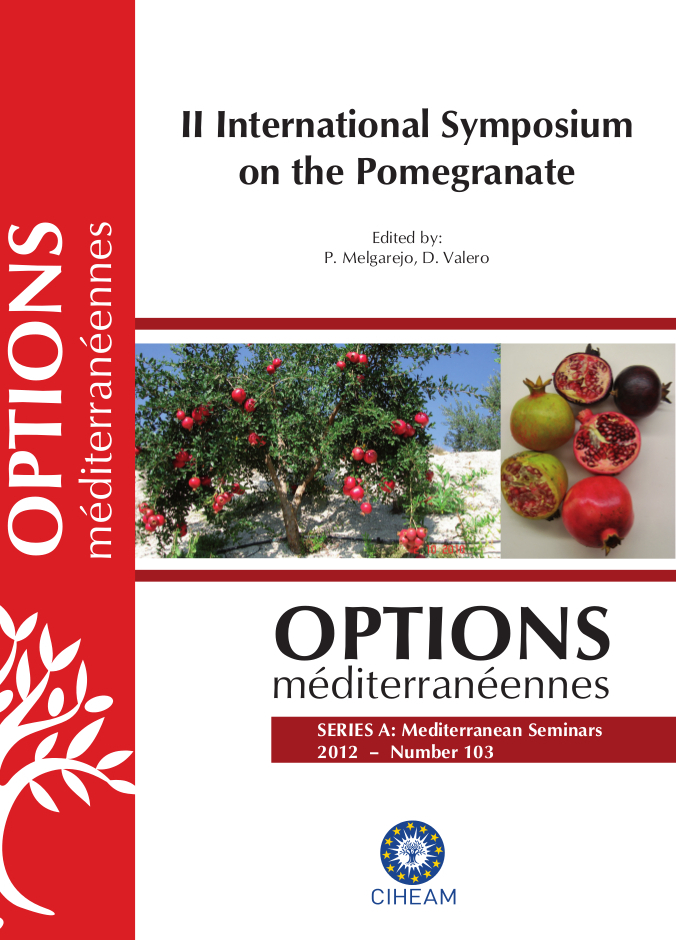| Article précédent | p. 335-337 |
Physico-chemical and antioxidant properties of pomegranate genotypes in Greece
Fruit quality attributes and antioxidants contents were compared among 11 Greek omegranate genotypes and the foreign cultivars Wonderful, Akko and Hicaznar, established in two collections in the northern Greece. The heaviest fruit were harvested by Wonderful (474 g), 11021 (400 g), Hicaznar (316 g), and T9 and T10 (mean 366 g). Kallisti had the greatest aril weight (0.472 ±0.015 g), whereas Wonderful had the lowest aril weight (0.260 ±0.025 g). The greatest edible portion percentage (62.3%) and juice percentage (44.7%) were found in the genotype 11019. Total soluble solid content ranged between 15.7% (Kallisti) and 18.3% (11019), and total acid content ranged between 4.8 (Hicaznar) and 22.4 g L-1 (Wonderful). The genotypes T9 and T10 contained the highest total phenol and ascorbate equivalent antioxidant capacity, which were comparable with Hicaznar and Wonderful. Total anthocyanin contents were lower in the Greek, compared with the foreign cultivars. In conclusion Kallisti is a worthy genotype in respect to having relatively great aril weight, fruit size and being soft seeded, and therefore it should be considered for fresh consumption. The genotype 11019 could be worthy for an industrial point due to its high juice content.
- [ Afficher ]
- [ Télécharger ]
- [ Exporter la citation ]
Vous pouvez télécharger la citation au format :
- [ Imprimer ]
-
Mots-clés
ANTHOCYANE, ANTIOXYDANT, COMPOSE PHENOLIQUE, FRUIT, QUALITECiter cet article
Pantelidis G., Drogoudi P., Manganaris A. Physico-chemical and antioxidant properties of pomegranate genotypes in Greece. In : Melgarejo P. (ed.), Valero D. (ed.). II International Symposium on the Pomegranate. Zaragoza : CIHEAM / Universidad Miguel Hernández, 2012. p. 335-337. (Options Méditerranéennes : Série A. Séminaires Méditerranéens; n. 103). 2. International Symposium on the Pomegranate, 2011/10/19-21, Madrid (Spain). http://om.ciheam.org/om/pdf/a103/00006978.pdf



